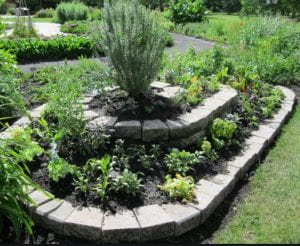The Top 5 Myths about Permaculture

Photo from Olds College, Flickr
Someone in a Facebook group I belong to posted a picture of their allotment and said they were doing permaculture, showing a picture of their herb spiral and asking what did other permaculturist’s plots look like?
I replied that my plot looked like everyone else’s because it does. You wouldn’t look at it and say ‘Oh, she does Permaculture!’ It is a myth that you can look at a plot and know that the person follows permaculture principles.
So, here are some more myths about Permaculture.
Just because you have a permaculture feature, e.g. herb spiral, swale, banana circles, chicken composting system or food forest, it does not mean that you ‘do’ permaculture. Permaculture is based around living by the three core ethics: Earth care, People care and Fair share and the 12 principles. You can’t see these by looking at the plot but you can see them if you know the person who has the plot because their behaviours will embody these ethics. I do have swales on my plot, they look like wood chip paths, but I also think carefully about the three ethics. Having the wildlife plot has increased the amount of People care and Fair share I can do.
You can’t use chemicals in Permaculture. Permaculture is a broad church and as they say, you can’t be thrown out of the permaculture family. It is true that under the Earth care and People care ethic you wouldn’t be spraying chemicals every week and replicating large scale agricultural systems but it is possible to spray with Round Up, for instance, once to clear the land of very pervasive plants and then move on and grow without chemicals. There is no one way of growing in permaculture. You could be organic, regenerative, no-dig, biodynamic or even syntropic (I know! I had never heard of it before). They all fit with Permaculture because it is the 12 principles that drive what and how you do it and they all care for the earth.
Permaculture is about growing food and you can’t have flowers or a lawn. Not true at all. You can have whatever you want in a permaculture design but you want to establish as many links between systems as you can and if you want a lawn for whatever reason, then you can have it. The final design for my Permaculture Design Certificate included a lawn for playing games on and pitching tents. The feedback stated:
You illustrate a good balance between open space and design space. Often either the lawn/social space dominates the site, or appears to be an afterthought shoehorned in and does not “fit”. Yours not only fits well into the rest of your design but strikes that good balance between it and the rest of your design.
Permaculture looks messy. This one is very subjective. My tidy might be your messy and what does looking messy mean. Do we mean lots of things lying around? If so, then whatever system you use to grow will look messy because that is a personal characteristic. Do we mean weeds are allowed to flourish? Well, the weeds might be a key component of the system. Nettles are a key component of my growing system. I keep them for wildlife as so many caterpillars live on them and I harvest them to create a tea for the plants and use them as an accelerator in my compost. They grow at the edges of my plot and can look a little ‘messy’ I suppose if your plot has none.
Is it that bare earth over winter looks tidy and that my plot doesn’t look like that? Permaculturists don’t like bare earth. Succession of the land means that something will always grow on bare earth so we keep crops growing throughout the winter, cover it with compost, mulch, green manures or woven plastic. These things also reduce erosion and provide protection to the hard work going on in the soil that means that our plants will grow. Is it that we have plants underneath and around trees? Yes, we do plant around and underneath trees and this is called a guild. Each plant has a function with the overall goal being to increase production of the tree.
Is it that there is a lot of long grass growing all over the place? Well that depends on the size of the land. If it is acres, then so what. If it is allotment size then that is nothing to do with permaculture. That is just how the grower allows it to be.
Permaculture is only about growing food. Nope. Permaculture is also about people and about how we apply the Fair Share ethic in a world that can prioritise accumulation of ‘things’ above connections between people and the earth. Social permaculture takes the principles and applies them to how we work with others. For example edge effect is where two ecosystems come together to create a third space which has greater productivity, fertility and diversity than the separate spaces. On land this might be the edge of the forest where different plants grow and animals live in comparison with inside the forest and out in the open. In social permaculture this might mean two separate groups coming together to work on a shared goal with the outcome of more creative ideas, greater diversity in the ways of thinking and solutions to problems, collaboration and friendships. The people and their systems are as important as the plants and their systems.
Do you follow permaculture principles?